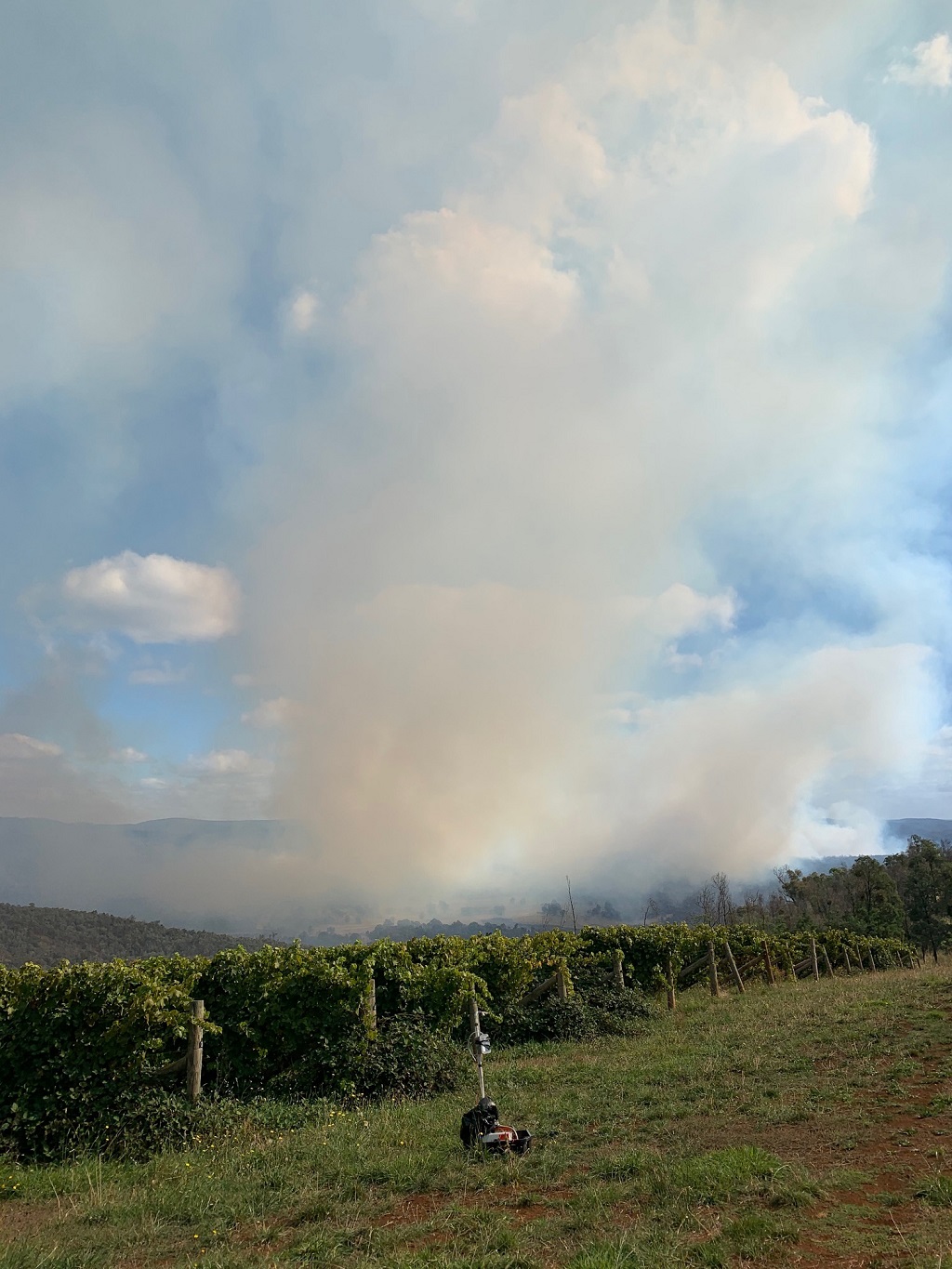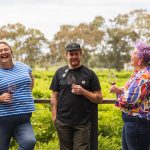The new smoke taint detecting sensors have been tested in the field and will be a valuable warning system, helping local growers make an early decision on whether to pick their fruit. PHOTO: Ian Porter
A project involving the installation of sensors in vineyards which will help grapegrowers make early decisions about their crop after smoke impact, is ramping up across North-East Victoria.
The new smoke taint detecting sensors, developed by a team headed by La Trobe University Professor Ian Porter, will allow growers to gather real time data from a site which can be accessed at any time via an app on their phone.
A total of 100 sensors are being rolled out to sites across North-East Victorian wine regions in two tranches this year, with the first 40 expected to be in place by the end of January and the remaining 60 by April.
Dr Porter said the sensors will log data for a risk assessment app, which is also being developed in the project, with the aim of having them up and running fully by the next season.
He said this season will be about validating the operation of the sensors and ensuring growers become familiar with the risk rating thresholds they will transmit during any controlled burns or bushfires that occur.
“The science behind this has been researched over six years so we’ve tried to get every aspect of a very complex area covered, whether it is different levels of smoke dose, grape and wine diagnostics, mitigation practices and sensory level,” he said.
“We’re confident now that we’ve got the relationship between all those factors and risks very well covered, which is critical for something like this.
“A grower will be able to make a call in real time, any time.”
Using what is believed to be world-first technology, the app operates with a traffic light type of warning system; when there is smoke in the air growers can get a clear indication of how it may be affecting their crop.
A ‘green’ reading will indicate there is nothing to be concerned about, an ‘orange’ may point to the potential of needing to take action (if the smoke remains), while a ‘red’ means the first level of mitigation may be required to offset potential taint.
Dr Porter said it is a risk tool to be used in conjunction with all aspects of science known about for dealing with smoke taint.
He was confident in its accuracy and said it would reduce the need for multiple, expensive analytical tests and inform production decisions.
“The early warning system is incredibly valuable because you can make an early decision on whether to pick fruit or not,” he said.
“In a major bushfire, it will mean you can make a decision on whether to invest 25 per cent of your input costs (incurred between a smoke event and harvest) on expenses such as spraying for disease and the labour required to pick.
“So you could minimise the financial cost of these events by making a decision early.”
Dr Porter said people in North-East Victoria in particular are already well informed and familiar with working with smoke.
He added this tool could make them more informed during the controlled burn season, particularly coming to the fore during bushfire events when it is “make or break”.
“They may not use it much during the year, but when a bushfire happens, that’s when they will really look at it and want to know what’s going on – that’s when it will be really useful,” he said.
“It will tell you straight away whether to worry or not.
“We have utilised information used for the warning system on a massive number of controlled burns and a large number of bushfires over the last six years, and we wouldn’t have been comfortable rolling it out until we’d done that.”
The sensor’s development has been funded through grants received by the North East Wine Zone (NEWZ) representing the Alpine Valley, King Valley, Glenrowan, Beechworth and Rutherglen wine regions.
It includes an $870,000 Federal Government Regional Economic Stimulus and Resilience grant received by Wines of the King Valley, following the 2020/2021 bushfires, with co-investment by La Trobe University and Wine Australia.
Those bushfires alone are estimated to have cost the Victorian wine industry more than $140 million in losses.
Dr Porter said the sensors cost in the region of $1000 each, making them an affordable tool for wine businesses in any smoke affected or bushfire prone regions.
Are you a Daily Wine News subscriber? If not, click here to join our mailing list. It’s free!





















